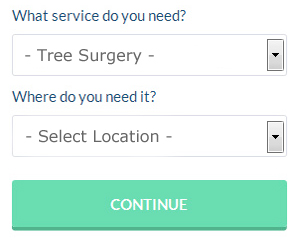Stanford-le-Hope Tree Surgeon Essex: Adding style, structure and substance to what can quite often be a two dimensional landscape, trees are an important feature of properties and gardens in Stanford-le-Hope. However, when poorly maintained or damaged by severe weather conditions such as storms or flooding, trees can be a bit of a problem. Seeking the advice of a skilled tree surgeon in Stanford-le-Hope, is the safest option when work needs to be undertaken on your trees.
Those who hire unqualified personnel, or try to do tree work by themselves, may cause a risk of damage to property, the trees or to life. However, tree work is certainly not a safe undertaking, even for qualified tree surgeons, who are aware of all the dangers. In actual fact tree surgery is one of the most hazardous jobs in the United Kingdom, with an average of 3 deaths and 140 serious injuries a year within the profession, therefore it is definitely not safe work for amateurs to do.
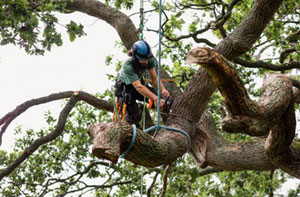
With around five people per year being killed by falling branches and trees in the UK, even a damaged or poorly maintained tree can also pose a risk to life. If an injury, or damage to property occurs due to you employing somebody to perform tree work, you could be liable for any compensation to any third-party as a consequence of your actions. These are the reasons why it is imperative to hire an accredited tree surgeon to carry out the work on your trees. (Figures sourced from HSE UK).
A trained Stanford-le-Hope tree surgeon will likely be an approved member of at least one of the 2 main professional industry bodies. You can check the professional standing and membership of any tree surgeon in Stanford-le-Hope on the websites of either the Arboricultural Association or the International Society of Arboriculture. This webpage allows you to check out if any specific local tree surgeon has recognised Approved ARB Contractor status, and has membership of either of these associations.
For mediation and for help and guidance at any point during or after the tree work has been completed, you'll be able to make contact with either one of these professional associations.
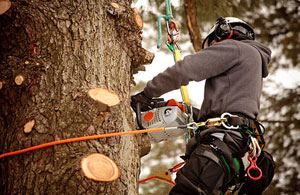
You should not be afraid to respectfully decline the offer of a quote from somebody who isn't on this directory, as at the end of the day, it is a fully qualified and approved contractor who you are looking for. As soon as you are reassured of their professional qualifications and associations you should try to get at least three different estimates from various companies in and around Stanford-le-Hope. You should ask the following questions whilst obtaining these quotes, making it clear that you need the answers due to the risks of the work involved:
- Can you provide a NPTC certificate for chainsaw use and maintenance, and documentary proof of your qualifications and professional memberships? The NPTC/LANTRA certificate is required by law for any operative/tree surgeon who uses a chainsaw. Certificates and National Diplomas in Arboriculture are qualifications that could be held by an experienced Stanford-le-Hope tree surgeon.
- Can I assess the standard of your work by contacting a person you've recently worked for? Independently examining any recent work is always recommended.
- Can you give me a written quotation? Verbal quotes alone aren't sufficient. Always try to get a written quote.
- What insurance cover do you provide? Don't consider a tree surgeon in Stanford-le-Hope with any less than £5 Million public liability insurance as stipulated by the ISA and AA.
The written quotation that you are provided with should include clear and concise details about the planned work. It should include specifics of any trees which may be protected in law, and the steps necessary to get permission to work on them, and also state who is responsible for the removal of debris, tree branches and stumps. Unless you're a commercial business, you should also make sure that VAT has been included on the quotation. It is extremely important that only competent people are hired to work on your property and trees, and this is wholly your responsibility.
PRIOR TO WORK - The tree surgeon you have chosen in Stanford-le-Hope, will look into whether any of the trees on your property are under a tree protection order (TPO), and will check with the local authority if the green light for any tree work is possible. Even protected trees need maintenance in order to cut back old or damaged wood and ensure public safety, so finding a tree has protected status doesn't mean that work cannot still be carried out.
At least six weeks written notice is required to the Local Planning Authority (LPA) prior to any work being carried out, if your property in Stanford-le-Hope is inside a conservation area. However, tree trunks of under seventy five millimetres in diameter when measured at 1.5m above ground level are exempt from this requirement. Also, it is not necessary to give written notice if a protected tree's branches need thinning or pruning simply to sustain and encourage growth.
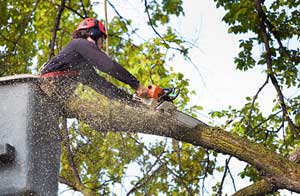
On site they'll carry out a thorough assessment of your tree's health and decide on the remedial treatment needed and how best to achieve the required outcome in a safe manner. Public areas, your property and any sections of neighbouring properties that could be impacted by falling branches and debris will all be given a risk assessment. At this point, the amount of workers required and the level of protection needed will also be ascertained. To keep property and the general public safe from harm or damage, this will include both personal protection equipment and other safety measures.
ON THE DAY OF WORK - To keep passers-by and unauthorised persons away from the work area, barriers and safety measures should be put in place before any climbing, tree felling or cutting of branches commences. It may at some stage be necessary to halt the traffic temporarily, if there's any threat of branches and debris falling onto the road.
Varying levels of protection will be necessary for the tree surgeon depending on what work needs to be completed. As the bare minimum when doing chainsaw work they'll be wearing specialist protective clothing to prevent cutting injuries to the legs, torso and hands. Eye and head protection, and high visibility clothing, should be worn by all workers involved in the operation.
Safety climbing equipment and ladders will be necessary if any working at height is involved, and to help with the safe removal of high branches and pieces of tree trunk, extra personnel will be essential. It is recommended that you inform your neighbours of the need for unhindered access, because a skip or other method of transporting the waste away will be stationed as close to the work area as possible.
AFTER COMPLETION OF WORK - Upon completion of all the tree work, the whole area can be cleared of any debris, and all the waste materials can be taken away. Particularly when the trees are protected, a certificate of work done should then be created by your tree surgeon, which will be signed off and a copy given to you. Any safety measures that were put in public areas can then be taken away, with roads and footpaths being re-opened.
If you've got any issues or problems with the finished work, you should first take them up with the tree surgeon so that they can be rectified straight away. If your tree surgeon is an approved member of a trade association, you can obtain guidance and help from the International Society of Arboriculture or the Arboricultural Association in order to arrive at an acceptable solution, if there is any further dispute or arbitration required.
Locally based Stanford-le-Hope tree surgeons will likely have the postcode SS17 and the telephone code 01375. They'll operate in Stanford-le-Hope itself, in addition to nearby areas like Grays, North Stifford, West Tilbury, South Ockendon, Orsett, Langdon Hills, Corringham, Basildon, Mucking, Linford, South Benfleet, Canvey Island, Horndon on the Hill, Vange, and these postcodes: SS17 0EJ, SS17 0EA, SS17 0EU, SS17 0PL, SS17 7AT, SS17 0AQ, SS17 0EZ, SS17 0AE, SS17 0HS, SS17 0FL.
If you require this sort of assistance it's definitely far better to bring in an accredited tree surgeon. Stanford-le-Hope property owners can substantially benefit from the expertise offered by a trained professional.
Pollarding Stanford-le-Hope
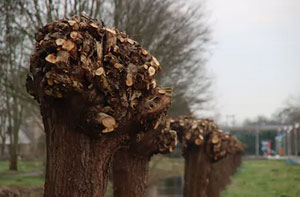
Where a tree has appreciably grown too large for its present environment, it must be drastically reduced in size by using a technique labeled as pollarding. The encouragement of cultivated features and the moulding of trees into specific forms can also be accomplished by the pollarding approach. You will quite often see trees which have been pollarded growing alongside streets in Stanford-le-Hope, and also quite typically in managed hedgerows For people who love trees it's not an especially popular technique, since the consequence is inclined to be rather stark and naked, with the appearance of being almost lifeless. Tree species like sycamores, horse chestnuts, oaks, limes, beeches, maples and planes are regular contenders for pollarding, and the positive element of this process is that trees which may normally need to be chopped down can be conserved for generations to come.
Air-Spading Stanford-le-Hope
When a tree's health is causing concern, this could be down to any number of issues, but is quite often because of problems with the tree's root system. Easy accessibility to the roots of your tree will be necessary for a local tree care specialist in Stanford-le-Hope to check for soil compaction, root rot and other potential issues.
Because there is a chance of inflicting damage on the roots during the process of digging, until recently this was a tricky thing to achieve. To effectively break down and strip away compacted soil without damaging tree roots or underground utilities, a modern day system that is often used is "air spading".
Sometimes, building work, foot traffic or passing vehicles can cause the soil surrounding a tree's roots to get compacted, and this can have a negative effect on its health. A tree can become "stressed" when it doesn't get sufficient nutrients and water, which renders it more susceptible to attack by insects, disease and pests. Air spading is also a good technique for resolving root flare problems, when the flare at the base of the tree becomes covered with an excess of soil, causing it's tissues to break down, and increasing the likelihood of root decay.
Involving the use of an air compressor and an air-spading tool, the air-spading process directs high-speed air into the soil, this breaks it up by entering spaces in the soil, but has no effect on the tree roots or nearby utilities. As the surrounding soil is directed away from the tree's roots by the powerful air flow, immediate inspection can take place. The previously compact soil can then be replaced with a looser layer of wood mulch and fertiliser to encourage the tree to rejuvenate, and rectify any problems.
Tree Surveys Stanford-le-Hope
There are various reasons why you may require a tree survey, and the most commonplace is for development or property extension. As outlined by BS5837 British Standards, if you're clearing some land to make way for an extension to an existing property or a brand new house in Stanford-le-Hope, and there are trees on that land, you may need to carry out a professional tree survey. Tree surveys on both public and private property should be completed by a qualified arborist or tree surgeon in Stanford-le-Hope.
A properly done tree survey will glean a number of details about all the trees within a defined area. For instance:
- The species of trees on the site (either common or scientific).
- The height of each tree in metres.
- The existence of any Tree Preservation Orders (TPOs).
- The ages of the trees.
- The expected lifespan of the trees.
- The allocation of a unique reference number for each of the trees.
- The number of trees.
- Preliminary tree management advice.
- The branch spread to the East, West, North and South.
- The diameter of each tree (taken 1.5m above ground level).
- The structural and physiological health of the trees.
If you are doing work on an existing property or home in Stanford-le-Hope but are not increasing the footprint of the property and aren't modifying the access points or service lines, a tree survey will probably not be needed. (Tags: Tree Surveyors Stanford-le-Hope, Tree Surveys Stanford-le-Hope, Stanford-le-Hope Tree Surveys, Tree Survey Stanford-le-Hope).
Cable Bracing Stanford-le-Hope
In specific situations where a tree is showing signs of decay, damage, or is a danger to nearby persons or property, a method called cable bracing can be used to offer support to the tree. Cable bracing is widely used on older or high-value trees in Stanford-le-Hope where it is undesirable to fell the tree or remove large unstable parts.
A cable bracing system can be useful for supporting any weak limbs, poor joints and V-shaped forks that may be causing some concerns. Most tree surgeons in Stanford-le-Hope will be prepared to conduct different kinds of bracing work through the installation of cables and rods to redistribute structural tension and significantly prolong the life of old and valuable trees.
The purpose of cable bracing is to offer a non-invasive method of support that doesn't damage the tree by having to drill and bolt the branches, and one that is is shock-absorbing and flexible. A risk assessment must be conducted by a tree surgeon or arborist before any actual work can be undertaken. This is essential to guarantee the safety of the tree and encompassing areas as the project proceeds.
Accidents Through Tree Surgery
As was mentioned earlier, the work that tree care professionals in Stanford-le-Hope undertake, involves a considerable level of danger. When work is being undertaken on trees, there is a clear risk of injury to both operatives and those on the ground, so all reasonable safety measures must be implemented.
It would appear (as stated by the Health and Safety Executive (HSE)), that falls from trees, the use of chainsaws, and being struck by a falling branch or tree are responsible for the majority of fatal and major injuries that are linked to tree work. In fact, arborists and co-workers that are involved in tree care work are more at risk of serious injury than those working in construction.
The most common tree care accidents are falling from ladders, lifting injuries and being struck by objects (grapple hooks, cranes, ropes, branches, trees etc), when it comes to insurance claims.
This should all help you to understand why it's so critical to hire a qualified tree surgeon in Stanford-le-Hope. Inexperienced workers trying to carry out tasks that they're not properly trained in, accounts for a lot of accidents in the tree care sector. Therefore, using an experienced and trustworthy company which has been trading in the Stanford-le-Hope area for a number of years, is the most effective way to avoid such issues.
The Skills and Knowledge Needed to be Tree Surgeons in Stanford-le-Hope
- Be capable of using, repairing and maintaining tools and equipment.
- To be meticulous and pay attention to detail.
- Be able to work with your hands.
- Patience and the ability to remain calm and focused in times of stress.
- Have necessary computer skills and know how to complete basic tasks on handheld devices.
- Good knowledge of public security and safety.
- Be alert to the dangers and complexities involved in all areas of tree work.
- Physical skills like movement and coordination.
- Excellent customer skills.
- Be professional and capable of completing tasks within a specified time frame.
- Being able to work efficiently with other folks.
Tree Preservation Orders Stanford-le-Hope
You need to make sure there is not a TPO (Tree Preservation Order) on any of your trees in Stanford-le-Hope, before you undertake any significant work on them. You local planning authority is the place to go to determine whether there are any Tree Preservation Orders on your property's trees. A TPO forbids the topping, wilful damage, uprooting, lopping, removal, wilful destruction or felling of any tree which is covered. Your tree surgeon should be able to explain the process and help you out with any checks.
If you are living within a conservation area in Stanford-le-Hope, and want to conduct any work on a tree with a stem diameter of 75mm or more (1.5m from ground level), you need to give at least 6 wks written notice to your local council.
Ash Dieback
Expected to devastate around eighty percent of the current United Kingdom ash tree stock, in the next few years, ash dieback (Hymenoscyphus fraxineus) is a lethal fungal disease of ash trees, the first case of which was reported in the British Isles in 2012. Set to have huge ramifications for our beloved countryside, ash dieback is destined to be just as devastating as the preceding outbreak of Dutch Elm Disease (DED).
The Fraxinus genus of trees is affected by this fatal disease, although it has a particularly devastating effect on the common ash (Fraxinus excelsior), which is the native UK species. The fungus which causes the disease is called Hymenoscyphus fraxineus, and it originated in Asia.
Readily spread by microscopic spores produced by the fruiting bodies of the fungus, and are able to travel on the wind for many miles, ash dieback (or chalara ash dieback) can be found in most areas of the UK with mortality rates of up to 85%.
Ash dieback has an effect on trees from every age group and has symptoms such as:
- Dark brown lesions form where branches connect to trunk, and the inner bark under the lesions looks brownish grey.
- New epicormic growth appears from previously dormant buds (common in stressed trees).
- Leaves and new shoots that are dying during the summer.
- Dark patches on leaves during the summertime.
- Leaves that wilt, turn black and fall prematurely.
Some ash trees can ward off early infections of the disease, but as it returns year after year, they eventually perish. There's currently no cure for ash dieback, and no apparent method for stopping it spreading.
Whilst the "Tree Alert Service" provided by the Forestry Commission is currently only interested in cases reported in new locations where ash dieback hasn't previously been recorded, if you're concerned about an ash tree on your property in Stanford-le-Hope, you should bring in a local tree surgeon to confirm the diagnosis and suggest a suitable solution.
The International Society of Arboriculture (ISA)
An international, non-profit organisation with its headquarters in Atlanta, United States, the International Society of Arboriculture is usually referred to just as the ISA. Advancing the professional practice of arboriculture, the ISA is a membership association serving the tree care industry all over the world.
The ISA has best tree care practices as its focus, inspiring those involved in the tree care industry develop their knowledge, skills and arboricultural expertise, by promoting educational events, services and publications.
Since an agreement between the two was signed in mid-2016 the Arboricultural Association (AA) has been an associate organisation of the ISA. This enabled the two to strengthen their relationship, while offering additional opportunities for anyone in the United Kingdom and Ireland who's a member of the ISA. AA members in the UK now benefit from being part of an international network of tree care professionals. Boasting over twenty two thousand members internationally the ISA now has professional affiliates and associate organisations in EXTRAcommercial tree care, tree fertilising, dead wooding, tree shaping, vegetation management, the protection of trees from grazing in Stanford-le-Hope, stump grinding, tree transplanting in Stanford-le-Hope, tree cutting in Stanford-le-Hope, tree planning, root decompaction, tree planting, dead wood removal, brush cutting services, woodland management, monitoring of tree health, soil terravention in Stanford-le-Hope, emergency tree surgery, coppicing, forestry management, stump treatment, woodland clearance, tree pruning, landscape clearing Stanford-le-Hope, hedge trimming, damage restoration Stanford-le-Hope, tree work, waste removal, cable bracing Stanford-le-Hope, tree felling Stanford-le-HopeTEN, and the UK.
Dutch Elm Disease
Destroying tree stocks and wiping out many millions of elm trees all around Britain during the past five decades or more, Dutch Elm Disease (Ophiostoma novo-ulmi) isn't so common now, as it previously was. Spread by the elm bark beetle (Scolytus) and caused by the fungus Ophiostoma novo-ulmi, Dutch Elm Disease (DED) was inadvertently imported into the British Isles from Canada in the late 1960's.
Through the movement of elm products like bark mulch, crates, saplings, and logs with the bark on, it was spread quickly through the British Isles after its initial arrival. This horrific disease didn't just affect elms in Britain, but also ravaged elm stocks in mainland Europe and North America. Although the origins of Dutch Elm Disease are uncertain, the suspicions are that it first originated in Asia (probably Japan).
The first symptoms of Dutch Elm Disease are:
- Foliage that turns yellow, shrivels and falls.
- Twigs that turn into a "shepherd's crook" shape.
- New shoots dying back from the tips.
- Dark streaks under the bark of twigs.
It generally starts to show up in early summer.
The felling of dying, dead and infected trees, has effectively removed the elm bark beetle's favourite habitat, and in recent times the spread of Dutch Elm Disease has been substantially slowed. There is now a continuing project for propagating young elms which are so far resistant to DED.
If you happen to have elm trees in your garden in Stanford-le-Hope, and are suspicious that they may be affected by Dutch Elm Disease, get in touch with your local tree surgeon for advice, or request a diagnosis from the THDAS (Tree Health Diagnostic & Advisory Service).
Tree Surgery Tasks Stanford-le-Hope

Stanford-le-Hope tree surgeons can normally help you with commercial tree care, tree fertilising, dead wooding, tree shaping, vegetation management, the protection of trees from grazing in Stanford-le-Hope, stump grinding, tree transplanting in Stanford-le-Hope, tree cutting in Stanford-le-Hope, tree planning, root decompaction, tree planting, dead wood removal, brush cutting services, woodland management, monitoring of tree health, soil terravention in Stanford-le-Hope, emergency tree surgery, coppicing, forestry management, stump treatment, woodland clearance, tree pruning, landscape clearing Stanford-le-Hope, hedge trimming, damage restoration Stanford-le-Hope, tree work, waste removal, cable bracing Stanford-le-Hope, tree felling Stanford-le-Hope and other tree surgeon services in Stanford-le-Hope, Essex. Listed are just a handful of the activities that are accomplished by a local tree surgeon. Stanford-le-Hope professionals will be happy to tell you about their full range of services.
Tree Surgeons Nearby
Also find: West Horndon tree surgeon, North Stifford tree surgeon, Fobbing tree surgeon, Horndon on the Hill tree surgeon, Bowers Gifford tree surgeon, Dunton tree surgeon, Orsett tree surgeon, Vange tree surgeon, Linford tree surgeon, Bulphan tree surgeon, Mucking tree surgeon and more. Practically all of these locations are serviced by tree care companies. Home and property owners in these localities can obtain tree surgery price quotes by clicking here.
Tree Care Services Stanford-le-Hope
- Stanford-le-Hope Tree Management
- Stanford-le-Hope Tree Dismantling
- Stanford-le-Hope Tree Care
- Stanford-le-Hope Tree Removal
- Stanford-le-Hope Stump Grinding
- Stanford-le-Hope Tree Pruning
- Stanford-le-Hope Root Grinding
- Stanford-le-Hope Soil Terraventing
- Stanford-le-Hope Tree Transplanting
- Stanford-le-Hope Tree Pollarding
- Stanford-le-Hope Hedge Reduction
- Stanford-le-Hope Woodland Management
- Stanford-le-Hope Stump Removal
- Stanford-le-Hope Tree Bracing
More Stanford-le-Hope Trades: Obviously, whenever you happen to be having tree surgery done in Stanford-le-Hope, Essex, you are likely to need other garden related services, and as well as a tree surgeon in Stanford-le-Hope, Essex, you may additionally need garden pond builders in Stanford-le-Hope, artificial grass installation in Stanford-le-Hope, topiary in Stanford-le-Hope, block paving in Stanford-le-Hope, garden shed builders in Stanford-le-Hope, garden planning and design in Stanford-le-Hope, SKIP HIRE in Stanford-le-Hope, landscapers in Stanford-le-Hope, gate installation in Stanford-le-Hope, lawn mowing in Stanford-le-Hope, garden waste removal in Stanford-le-Hope, garden decking in Stanford-le-Hope, soil irrigation in Stanford-le-Hope, patio installers in Stanford-le-Hope, weeding in Stanford-le-Hope, garden clearances in Stanford-le-Hope, and other different Stanford-le-Hope tradespeople.
 Tree Surgeon Stanford-le-Hope
Tree Surgeon Stanford-le-Hope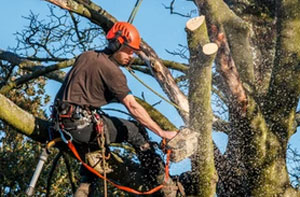 Tree Surgeons Stanford-le-Hope
Tree Surgeons Stanford-le-Hope Tree Surgery Stanford-le-Hope
Tree Surgery Stanford-le-HopeTo read local Stanford-le-Hope info check here
Tree Surgeon Jobs Stanford-le-Hope: Find Stanford-le-Hope tree surgeon jobs here: Stanford-le-Hope Tree Surgeon Jobs
Tree Surgery SS17 area, telephone code 01375.
TOP - Tree Surgeon Stanford-le-Hope
Tree Surgeon Stanford-le-Hope - Vegetation Management Essex - Tree Removal Stanford-le-Hope - 01375 - Tree Care Stanford-le-Hope - Crown Lifting Stanford-le-Hope - Stump Removal Stanford-le-Hope - Tree Surgery Stanford-le-Hope - Tree Pruning Stanford-le-Hope



